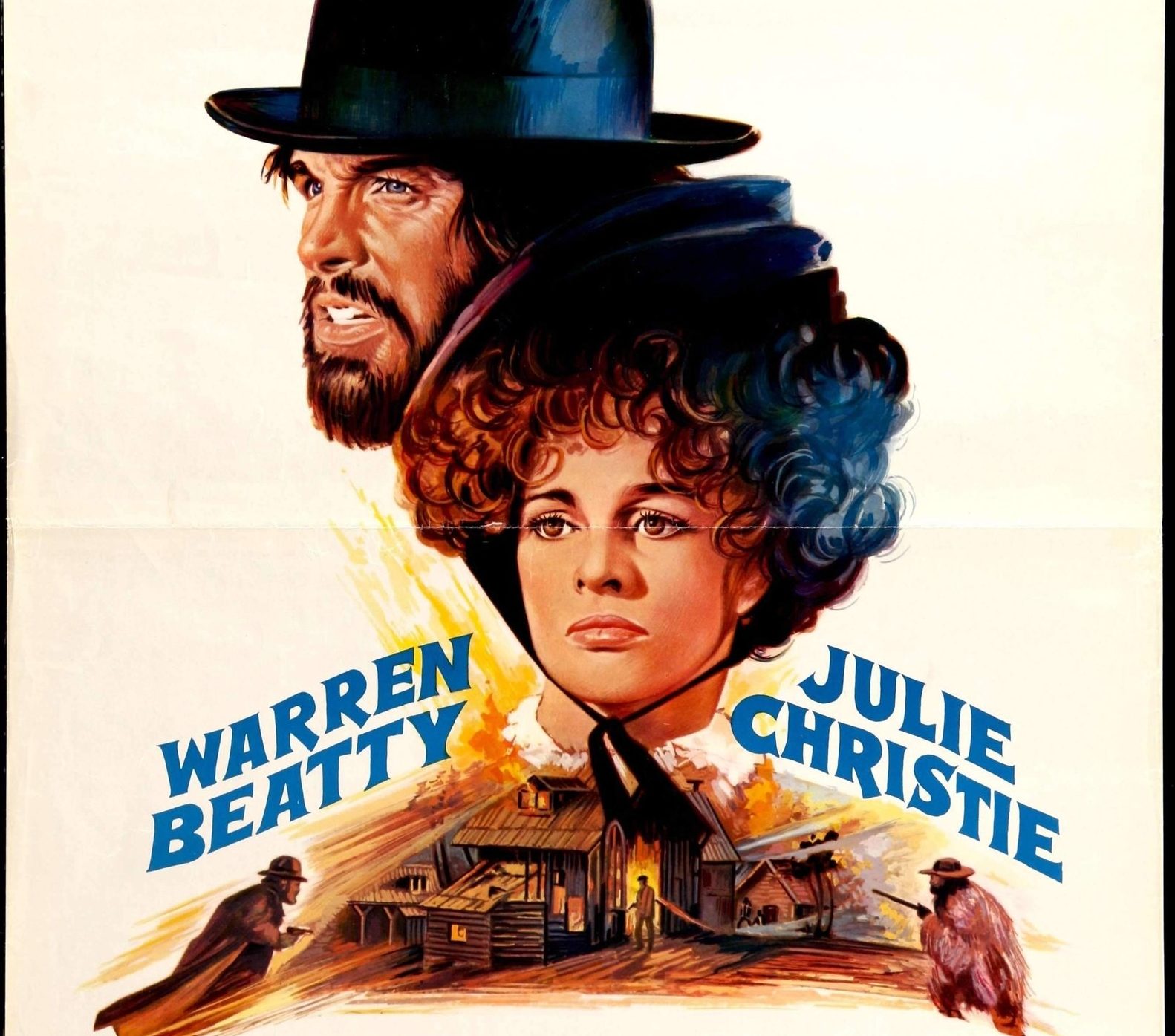McCabe and Mrs. Miller

“I’ve got poetry in me,” mutters the gambler John McCabe (Warren Beatty) to himself, “but you’re freezing my soul.” Downing another raw-egg-laced shot of whiskey, he fumbles with his unfamiliar gun. He is about to venture into a raging snowstorm for a deadly cat-and-mouse hunt with a trio of hired killers, but all he can think about is his unrequited love for Constance Miller (Julie Christie), his aloof business partner in a frontier brothel.
McCabe and Mrs. Miller (1972), director Robert Altman’s most poetic film, opens with the haunting howl of the wind, gradually overlain with a plaintive song by the young Leonard Cohen (the film’s total soundtrack is an interplay between the sounds of weather and Cohen’s surprisingly relevant lyrics, punctuated by random mandolin or fiddle phrases from background actors). McCabe, wrapped in a huge buffalo skin against the storm, is slogging on horseback into Presbyterian Church, a Northwest wilderness mining town that literally grows out of the ground as the movie gradually unfolds.
The town (production design by the detail-obsessed Leon Erickson) is a major element of the film, tracking the film’s arc of narrative. It begins as barely a settlement and evolves as the set is built into a thriving if still primitive center (culturally anchored by McCabe’s less than successful gambling saloon and Mrs. Miller’s surprisingly wholesome whorehouse). But beset by greed and violence, its namesake church burning, as we watch the town slowly begins to disintegrate — like the dying McCabe, buried in wind and snow, or the distant Mrs. Miller, lost in an opium dream.
In his second major work following the groundbreaking war comedy M*A*S*H, Altman creates a tone poem of a film — an elegiac slice of life consciously conceived as an “anti-Western” (John Wayne called it “corrupt”). Developing further his signature collaborative approach, he relies on his evolving crew of compelling actors and brilliant technicians. This “talent pool” was held together by his contagious energy, even as his erratic ego caused anger and rifts — for instance, Altman commissioned and then attempted to cut out of the film’s credits his former screenwriting collaborator and friend Brian McKay.
Altman’s creative skill (his more than 40-year filmmaking career culminated in 2012 with an honorary Oscar) is most evident in the overarching vision of his films, knitting together a seamless quilt of lush visual beauty, naturalistic sound, and mesmerizing performances.
He pushes Vilmos Zsigmond, the brilliant cinematographer, to create the film’s memorable “golden glow” by double-exposing the negatives with a yellow base, and to accentuate its climatic moodiness by shooting scenes in downpours and snowstorms. He insists on layering and overlapping background dialogue in crowd scenes, rejecting criticism that it was muddy and undecipherable — it is actually that murmuring quality that contributes to the film’s distinctive, realistic sound.
But it is in casting and directing the film’s significant performances that defines Altman’s consummate craft. Previously unknown but talented actors such as Rene Auberjonois (a crafty tavern owner), Keith Carradine (a heartbreakingly doomed cowboy) or Shelley Duvall (a plaintive recent widow) became staples in Altman’s future troupe of regulars. However, the creative give and take of working with Warren Beatty and Julie Christie, his difficult but brilliant leading actors, gives the film its unique aura.
Christie, the celebrated British star (and Beatty’s lover of the moment), in a few indelible scenes, defines a strangely elusive personality, at once aggressive and yet distant. Warren Beatty, by this point, was himself a successful actor and director, as well as co-producer of the current film — all roles that complicate the power exchange with the director. Altman liked to work quickly, using few takes in order to maintain the project’s momentum. Beatty, on the other hand, was a perfectionist, seldom satisfied with his initial work. On one memorable occasion, Altman was so frustrated with endless revisions that he went to bed, leaving Beatty to work with his assistant director until he was satisfied — with the 30-second take.
A film that embodies so many creative risks and potential contradictions would seem to be a recipe for disaster, especially for a rebellious director like Altman. But talent and vision win out. As the film glides into a melancholically tragic, yet strangely satisfying ending, you realize that you have been in the presence of arguable cinematic genius — a totally integrated work of poetry and art well worth visiting over and over.
McCabe and Mrs. Miller is available as streaming video on iTunes and Amazon Prime.



